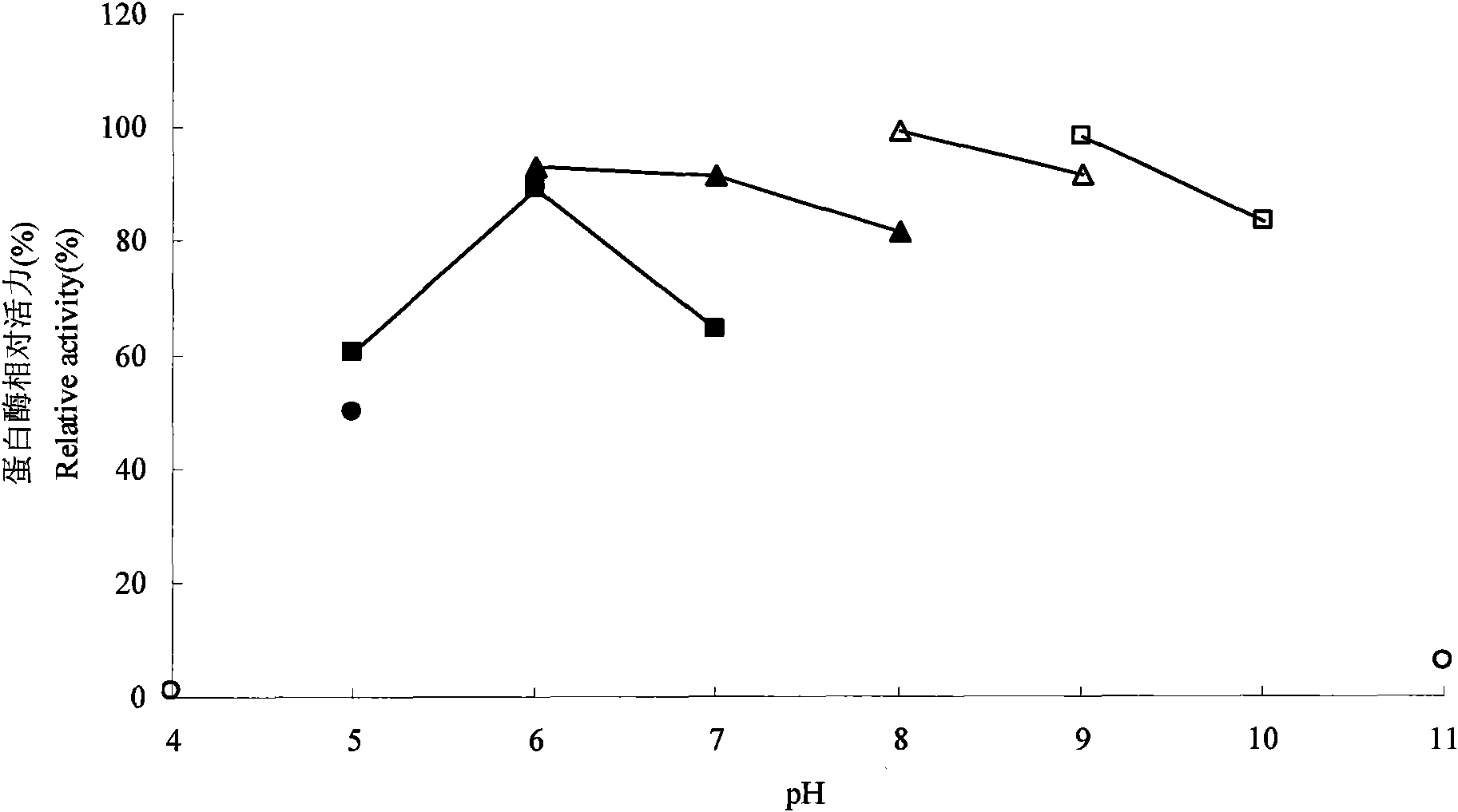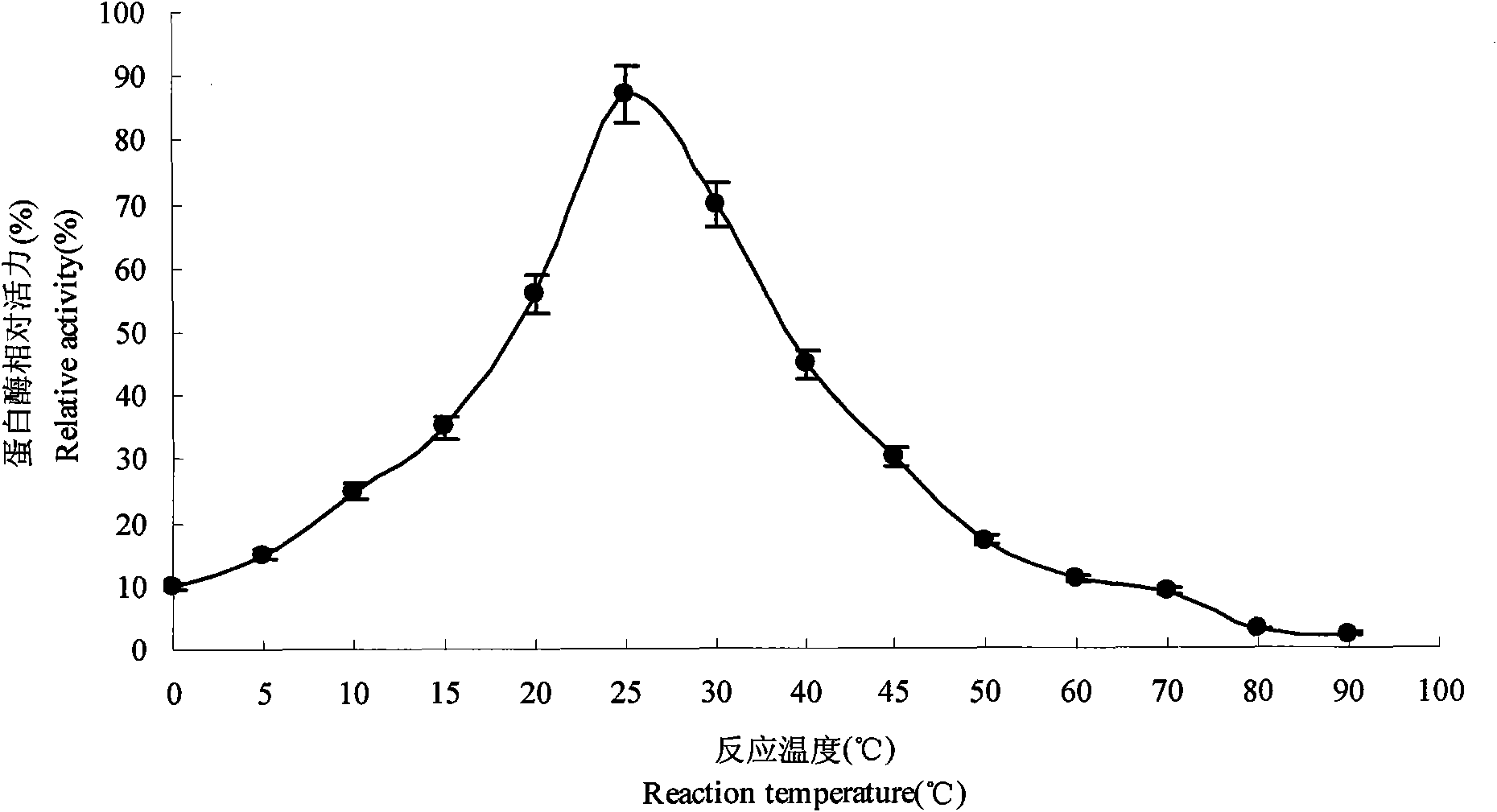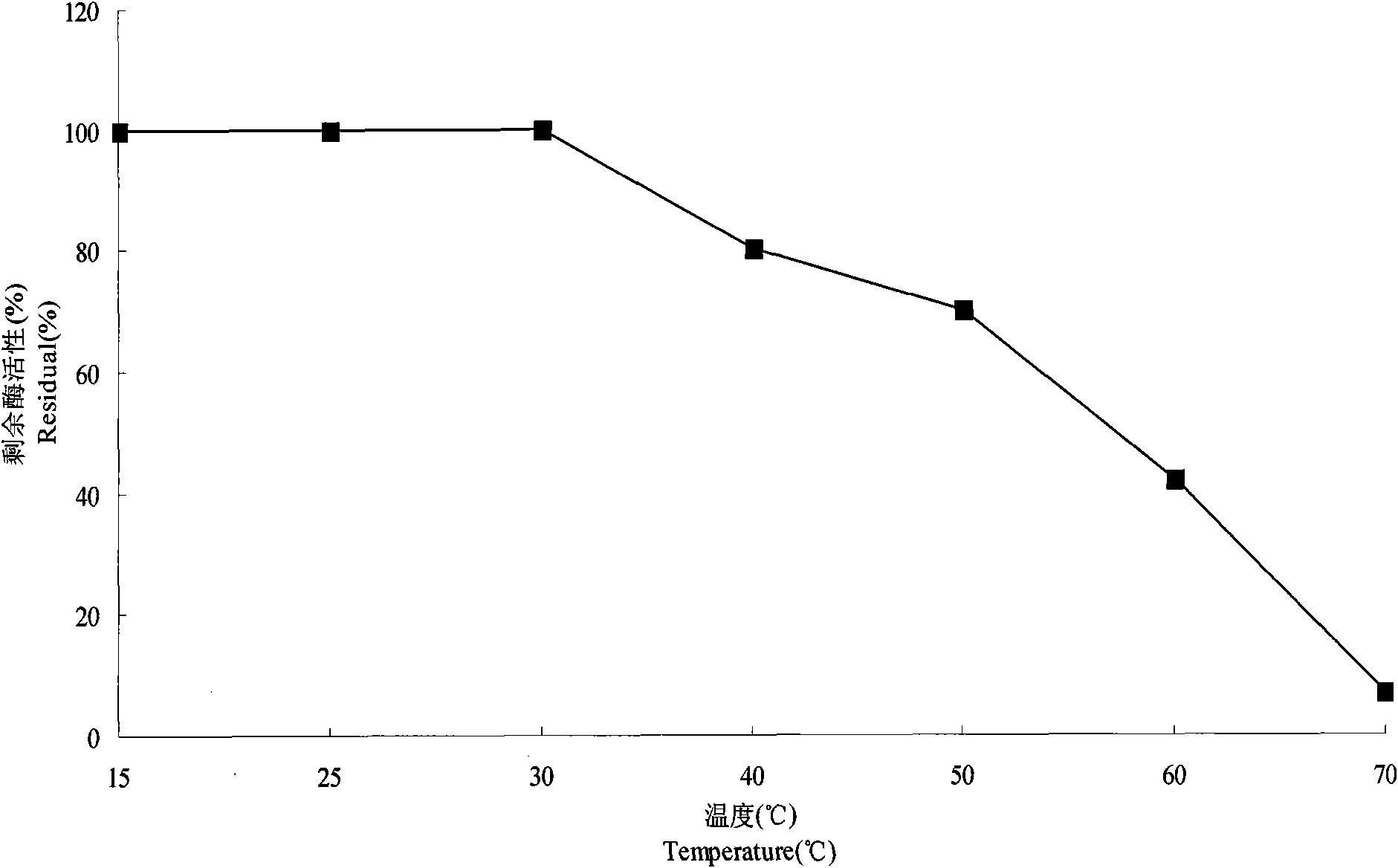Low-temperature alkaline proteinase marine bacteria strain, low-temperature alkaline proteinase and production method thereof
A low-temperature protease and production method technology, applied in the direction of microorganism-based methods, biochemical equipment and methods, bacteria, etc., can solve problems such as large differences and differences in enzyme characteristics, and achieve high enzyme activity, high and low temperature stability, and convenience Collection of refined effects
- Summary
- Abstract
- Description
- Claims
- Application Information
AI Technical Summary
Problems solved by technology
Method used
Image
Examples
Embodiment 1
[0043] Activation culture of low temperature protease producing bacteria (B8453013)
[0044] The low-temperature protease-producing bacteria B8453013 was inoculated on the surface of 2216 medium, and cultured at 15°C for 3 days for rejuvenation. Then inoculate it in the 2216 medium containing 0.1wt% skimmed milk powder for screening, cultivate at 15°C for 3 days to produce an obvious transparent circle around the colony, and pick the strain with the largest diameter ratio of the transparent circle to the colony for subsequent fermentation strain. The composition of 2216 medium is by weight: peptone 0.5%, yeast extract 0.1%, NaCl 11.738%, KCl 0.332%, KBr 0.048%, MgCl 2 ·6H 2 O 5.305%, SrCl 2 6H2O 0.020%, CaCl 2 2H 2 O 0.7345%, Na 2 SO 4 1.9585%, NaHCO 3 0.096%, H 3 BO 3 0.013%, (NH 4 ) 2 SO 4 0.5%, deionized water, pH9.0, 0.1Mpa steam sterilization for 15 minutes.
Embodiment 2
[0045] Embodiment 2: the fermentation culture-I of low-temperature protease producing bacteria (B8453013)
[0046] In this example, the fermentation strain obtained by screening was directly inoculated into the fermentation medium for cultivation. Specifically:
[0047] Inoculate the slant surface of the fermentation strain into the fermentation medium, fill each 250mL shake bottle with 100mL of fermentation medium, the culture conditions are: 15°C, 150 rpm, 72 hours of fermentation, and the enzyme activity reaches 97U / mL. The components of the fermentation medium are by weight: 0.5% casein, 0.5% sodium citrate, 0.5% peptone, 0.1% yeast extract, 11.738% NaCl, 0.332% KCl, 0.048% KBr, MgCl 2 ·6H 2 O 5.305%, SrCl 2 6H2O 0.020%, CaCl 2 2H 2 O 0.7345%, Na 2 SO 4 1.9585%, NaHCO 3 0.096%, H 3 BO 3 0.013%, (NH 4 ) 2 SO 4 0.5%, Tween-800.05%, deionized water, pH9.0, 0.1Mpa steam sterilization for 15 minutes.
[0048] Add ammonium sulfate to the obtained protease liquid...
Embodiment 3
[0049] Embodiment 3: Fermentation culture-II of low temperature protease producing bacteria (B8453013)
[0050] In this embodiment, the strains for fermentation obtained by screening are first subjected to liquid proliferation culture, and then inoculated in the fermentation medium for fermentation. Specifically:
[0051] Inoculate the slant surface of the low-temperature protease-producing strain in 2216 medium for proliferation at 15° C. and 150 rpm. After culturing for 24 hours, the culture is added to the fermentation medium with 15% inoculum size for fermentation. The composition of 2216 medium is the same as in Example 1. The components of the fermentation medium and the sterilization method are the same as the components of the fermentation medium and the sterilization method in Example 2. The fermentation culture is 50 mL of fermentation medium per 250 mL shake bottle, the culture conditions are: 15°C, 200 rpm, 72 hours of fermentation culture, and the enzyme activit...
PUM
 Login to View More
Login to View More Abstract
Description
Claims
Application Information
 Login to View More
Login to View More - R&D
- Intellectual Property
- Life Sciences
- Materials
- Tech Scout
- Unparalleled Data Quality
- Higher Quality Content
- 60% Fewer Hallucinations
Browse by: Latest US Patents, China's latest patents, Technical Efficacy Thesaurus, Application Domain, Technology Topic, Popular Technical Reports.
© 2025 PatSnap. All rights reserved.Legal|Privacy policy|Modern Slavery Act Transparency Statement|Sitemap|About US| Contact US: help@patsnap.com



